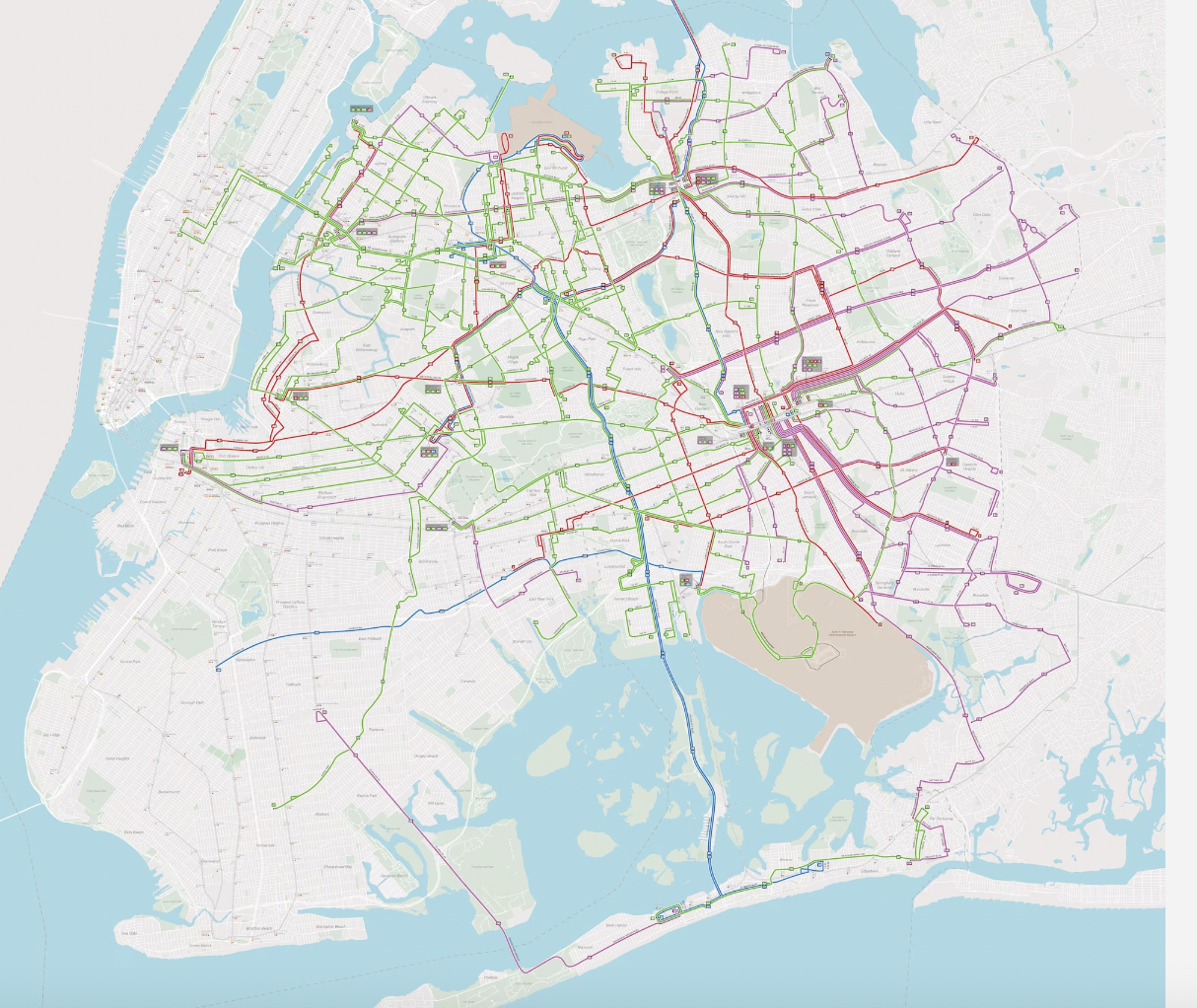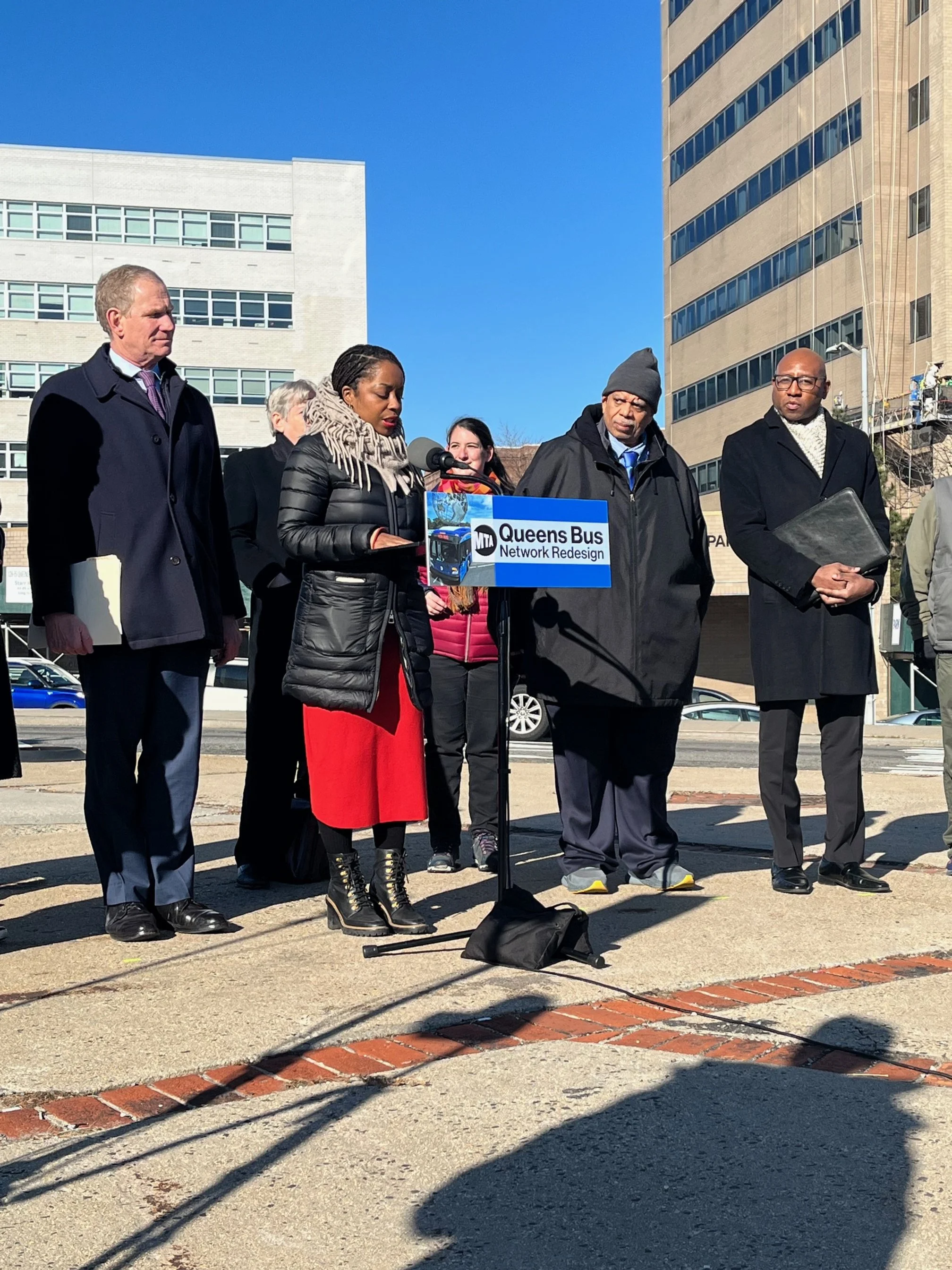The wheels on the bus go ‘round a new route: MTA unveils latest effort to overhaul Queens’ bus network
/The MTA unveiled a new draft of the Queens bus redesign on Tuesday, which see’s myriad changes to Queens bus routes across the borough.Screenshot via the MTA
By Ryan Schwach
Queens bus riders are accustomed to long wait times – and they will have to have to wait a little longer to find out how the MTA wants to redraw the borough’s bus map.
In the meantime, however, Queens bus riders got a look at the latest – and final – proposed plan for the Queens Bus Network Redesign, which was unveiled by the MTA on Tuesday.
The plan – which is the authority’s second swing at a redesign for the World’s Borough’s bus routes – will now undergo another round of community input before a final map is put together and ultimately implemented throughout Queens.
Just before the COVID-19 pandemic, the MTA rolled out a first draft of the redesign plan, which received enough pushback that it was scrapped altogether, sending the MTA back to the drawing board. The plan presented on Tuesday is the result of feedback from locals over the course of 2022, the MTA said.
The new iteration of the map, which MTA Chair Janno Lieber called a “tremendous first step,” infused an additional $30 million into the project
“This has been years in the making,” said Lieber. “This is an iterative process in dialogue with the community and the electeds that goes on, but we're moving forward.”
Under the new plan, there will be 15 new route labels – some that are just renamed and others that create new service altogether, 10 retired routes and a number of routes that will be redrawn, shortened or lengthened based on local feedback. It also includes a new express bus route – the QM65, which would go from Southeast Queens into Midtown Manhattan – and eight new 24-hour routes.
The MTA says that if the draft map were implemented, riders would save an average of 20 seconds per stop overall across the Queens bus system.
“As MTA chair I have always said buses are the engine of equity in our city,” said Lieber. “They disproportionately serve seniors, people with disabilities, residents of low income neighborhoods and neighborhoods, especially communities of color, all of the people who don't have ready access to the subway. Queens is the center of that issue.”
What is included in the plan?
The broad strokes of the plan lay out changes to four different Queens areas – Northwest, Northeast, Southwest and Southeast.
In Northwest Queens, a number of routes see service completely maintained, including the Q23 from Forest Hills to 108 Street and the Q29 from Glendale to Jackson Heights.
The draft map proposes a new route, called the Q98, a crosstown route that would connect Ridgewood to Flushing. In addition, the new Q105 would fill gaps along 31st Avenue between Long Island City and the area around the bridge to Rikers Island.
Other routes that see changes are the Q18, Q59, Q14, Q38 and Q104, under the proposal.
In Northeast Queens, several new routes will increase service between the subway and Downtown Jamaica, and many others see straightening, extending or shortening like the Q46, Q61 and Q31.
In Southeast Queens, where residents have some of the longest commutes in the city, the Q22 and Q77 each would see extensions under the map.
The new Q51 route fills gaps along Linden Boulevard between Ozone Park and Cambria Heights, and the new QM65 express route connects Laurelton with Manhattan.
Finally in Southwest Queens, the Q11 would serve both Old and New Howard Beach and the new Q9 and Q40 would provide faster and more direct service to the subway and Jamaica.
There are several other changes, new routes, deviations, stop changes and more that may affect Queens residents’ daily commutes under the new plan. For information on your own specific communities and the bus routes you use to get around Queens, go to new.mta.info/project/queens-bus-network-redesign.
Some early push back
MTA officials on Tuesday were joined by Queens Borough President Donovan Richards and Southeast Queens representatives Senator Leroy Comrie and Councilmember Selvena Brooks-Powers.
Brooks-Powers represents areas of Southeast Queens considered to be transportation deserts and also chairs the Council Transportation’s Committee.
“Every year nearly 700,000 people in Queens ride the bus, it is a vital bridge for many residents in my district to the rest of the city,” she said. “In fact, it's the only choice of transportation for a large portion of my district on a daily basis.”
However, the Far Rockaway councilmember had some early push back on the project.
MTA and local elected officials unveiled a new draft of the Queens bus redesign on Tuesday, including Borough President Donovan Richards and Councilmember Selvena Brooks-Powers. Eagle photo by Ryan Schwach
“I have serious concerns about the proposal at hand,” she said. “The changes proposed to help streamline and speed of service could also leave many people in my district at a severe disadvantage, especially with the addition of congestion pricing in the city. I want to ensure the MTA is looking at the bus redesign and congestion pricing holistically, and this process must be equitable and balanced.”
Brooks-Powers left the conference following her remarks, and Comrie elaborated on her displeasure.
“In trying to take care of our community, they did too much,” he said. “So it's about tinkering, she's upset because she wants to get it right. She's not upset because it's all wrong. What has actually happened is now we went from one bus line in Rosedale to four bus lines, and that'll confuse people.”
Richards, who called the plan “a long time coming,” also said he’s looking forward to making changes to the plan.
“There's still a lot more work to be done,” he told the Eagle. “But we have a commitment from them to go line-by-line.”
He also said that the $30 million investment for the plan was a solid start, but he wanted to see that number get larger, and encouraged Queens residents to get out and give the MTA their thoughts.
“Queens, you showed up in the last round, we need you to show up, again, to make sure that your voice is heard through this process” he said.
The next stop
Despite years of waiting for a new plan, it will be a bit longer until a final draft is set in stone for Queens.
The MTA plan outlined a year of public input sessions across the borough in order to get feedback on the new project.
That will include 14 virtual workshops for each Queens community district, five in person open houses and a series of pop-up events.
“We need the public, we need the drivers, we need all the users, we need the people who are going to be impacted from the businesses that come out to these meetings, and speak your mind,” said Comrie. “Whether you like what's going on, however it's going to impact you, we need your input on this, because we want to get this right.
The MTA’s schedule says the authorities board could vote on the project by the end of 2024, but officials indicated it is likely we won’t see any implementation until 2025.





